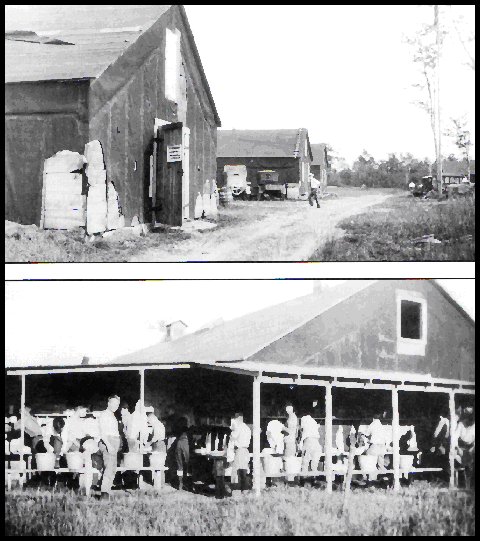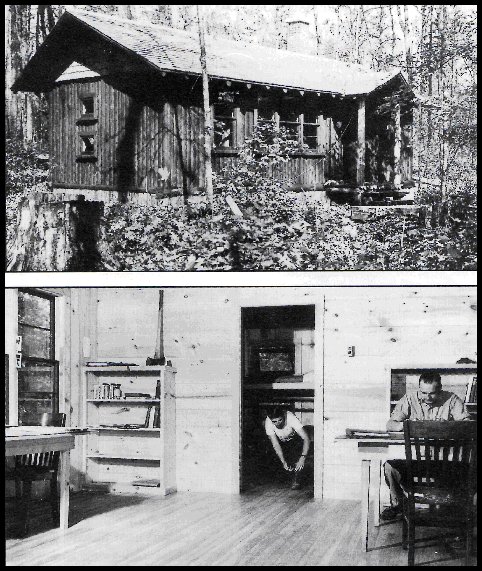
|
|
||||
Forestry Schools in
Upper Michigan; Then and Now . . .
By Louis J. Verme
| University
of Michigan
The first full semester course in forestry at the University of Michigan was taught by V. M. Spaulding, a Ph.D. from the University of Leipzig, in the School of Political Science, in 1882. Forty-eight students enrolled in his class, although there were numerous "visitors" (i.e. attending for no credit). The course was dropped from the curriculum in 1886. (Lectures in forestry had also been given at Yale University, Iowa State College, Cornell University, Massachusetts Agricultural College, and the University of Pennsylvania in the 1870s, but with the possible exception of Yale, these apparently had not been formal courses.) In 1903, Filibert Roth, a native of Germany who had received a bachelor's degree from U of M in 1890, was named chairman of the Department of Forestry which had been established the year before. Instruction was offered in 4 related topics as a 2-year program, open only to graduate students or others properly qualified, who intended to make forestry their profession. The total number of students grew from 20 in 1903 to over 200 in 1910. The degree of Bachelor of Science in Forestry was actually first conferred in 1916, when 16 men graduated in the by then 4-year curriculum. Some years later the school began looking for a suitable site upon which to locate a permanent summer camp, since field experience was required of all forestry students between their junior and senior year. A likely spot was found east of Munising, in the Beaver Basin area of Alger County (now within the Pictured Rocks National Lakeshore). Getting title to the land was fraught with various practical, financial, and legal problems, however, hence the matter was temporarily stymied. At the suggestion of CCI
officials, an alternative site was selected in June 1929, consisting of
an abandoned logging camp 8 miles south and west of Munising and 1 mile
south of the 8-Mile Corner location off Highway M-94. It was named Camp
Filibert Roth in honor of the man who had led the forestry program
at Ann Arbor from 1903 until his retirement in 1923. |
|
 |
According to Robert Craig, director of Camp Roth from 1929 to 1947, "the available buildings left a lot to be desired. They were a group of tarpaper shacks… which had been abandoned for some time. Cattle had used them for shelter, windows were out, doors were off, and the whole place was in rundown condition. The only source of water was a well 165 feet deep with a hand pump which required 17 strokes to bring the first water to the surface. Washing and bathing accommodations [using buckets] consisted of an open-air shelter… afforded by two buildings which joined each other at right angles. When the camp closed in the fall, everything had to be packed in boxes and hauled into Munising [Paper Mill, now Kimberly-Clark] for storage. The mattresses were rolled up, tied, and stored in the mothproof compartments in which the mill kept its woolen supplies."
From 1929 to 1934, University of Michigan forestry students spent a summer at Camp Filibert Roth southwest of Munising, to gain practical experience in woods work and timber management. The abandoned tar paper shacks, donated to U of M by the corporate land owner CCI, left much to be desired as a teaching facility (1930) or student dormitory/wash house (1934), lower photo. (Bentley Historical Society) |
|
After an extensive search, a nice spot was found in Iron County on the west side of Golden Lake, about 15 miles west of Iron River near Highway US-2. The Von Platen-Fox Company had done some selection logging in this area and had constructed a good set of camp buildings for use by other organizations once cutting on adjacent timberlands was completed. A 5-year lease to 10 acres was agreed upon at a dollar per year rental. Eventually U of M owned title to 214 acres within the Ottawa National Forest boundary, who, moreover, allowed the school to use its vast land for field instruction. The move to beautiful Golden Lake was made in June 1935. Existing structures at that time consisted of a cookhouse, 3 bunkhouses, a shop, 2 garages, a large barn, a small cottage, and an office. The cookhouse was used with little alteration. One bunkhouse was converted into a classroom, whereas the other two served as dormitories. By 1942, the original buildings had badly deteriorated, thus the administration decided to upgrade the camp, especially the dormitory system. Small modern cabins were constructed, each housing four men. Five faculty cabins were likewise built. Telephone service was installed in 1944, and a powerline reached Camp Roth in 1946. Forestry enrollment climbed
dramatically from 13 summer students in 1923 to 73 by 1950, when there
were 28 new buildings and 8 older, but refurbished ones, still in use.
The camp curriculum changed over the years, although forest mensuration
and ecology were always deemed essential elements of study here. "At
first fire protection and forest improvements were stressed, but later
fire protection was transferred to Ann Arbor, and the amount of improvement
work… reduced." |
|
 |
For many years, the forestry and wildlife management students attending Camp Roth made an annual pilgrimage to the Cusino Wildlife Research Station at Shingleton (where I worked), to learn about our latest findings on Upper Michigan game animals. However, this trek came to an end in 1987 when the camp was closed because of serious financial constraints. This evidently was a hard decision for the administration to make from a purely academic standpoint, not to mention students' welfare. Moreover, the undergraduate program at the University of Michigan was gradually phased out, with the last B.S.F. degree awarded the next year. The graduate school program continues, however, with students awarded the Master of Forestry or Master of Science degree upon completion of academic requirements. In 1988, the summer camp program for forestry students was switched to the University's biological station on Douglas Lake near Pellston. According to Professor Emeritus John Bassett, that arrangement has worked out very well; at least so far, he adds. The aging Golden Lake facility was sold in 1997 to local entrepreneurs.
In 1935, Camp Roth was moved to Golden Lake, west of Iron River near Highway US2. Modern living quarters were built in 1943 for students (both photos). This facility was closed in 1987 and sold in 1997. (Bentley Historical Society) |
![]() TOP
Press arrow to return to
the top of this page.
TOP
Press arrow to return to
the top of this page.

This website is maintained
by Bill Cook, Michigan State University Extension
Forester in the Upper Peninsula. Comments, questions,
and suggestions are gratefully accepted.
Last update of this page
was
16 November, 2007
This site is hosted by School of Forest Resources and Environmental Science at Michigan Technological University.